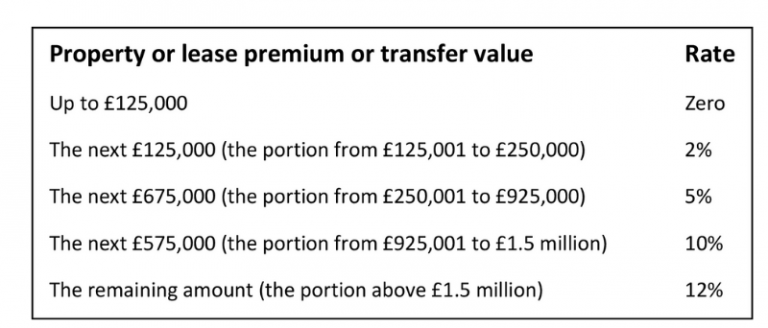With the Stamp Duty holiday coming to an end, conveyancing specialist, Victoria Cranwell, explains how the tax will be calculated from 1st October 2021.To discuss your conveyancing requirements, including requesting a conveyancing quote, our conveyancing solicitors are available on 01225 462871. Alternatively, you can contact them by email, or by completing the Contact Form at the foot of this page. Conveyancing quotes are also available online. |
For the past 14 months, any conversation regarding conveyancing or residential property more generally, has been dominated by one topic – Stamp Duty Land Tax (SDLT). But as we are all too well aware, the end is nigh for the Chancellor’s Stamp Duty holiday. From 1st October 2021, normality resumes, and below I have summarised how Stamp Duty will be calculated on residential purchases completed on or after that date.
Second home Stamp Duty
The rates I quote apply to residential property purchases unless:
- buying the new property means you will own more than one, eg it’s a second home or a buy-to-let;
- you are not a UK resident, ie you were not present in the UK for at least 183 days (6 months) during the 12 months before your purchase.
If your purchase falls into either of those categories, you will usually have to pay Stamp Duty of:
- 3% on top of SDLT rates for an additional property;
- 2% on top of SDLT rates for non-UK residents.
First time buyer Stamp Duty
If you are a first time buyer you can claim a Stamp Duty discount as long as the purchase price does not exceed £500,000. If it does, you are treated in the same way as somebody who has owned a property before. If you qualify for a discount, you pay:
- no Stamp Duty on the first £300,000;
- 5% Stamp Duty on any additional proportion from £300,001 to £500,000.
For example, a first time purchase of £325,000 will attract Stamp Duty of:
0% on the first £300,000 = £0
5% on the final £25,000 = £1,250
Total Stamp Duty £1,250
You will only be eligible for this discount if all the purchasers are first-time buyers. So, even if you are a first time buyer, if a person you are buying the property with is not, you will not qualify. Also, you will be ineligible if you have previously inherited a property, whether or not you ever lived in it and/or it’s been sold.
How much is Stamp Duty?
If you are a UK resident who is not a first time buyer, and the purchase will not result in you owning more than one residential property, in most cases the Stamp Duty you pay is calculated as follows:

For example, if the purchase price is £430,000, the Stamp Duty usually payable is:
0% on the first £125,000 = £0
2% on the next £125,000 = £2,500
5% on the final £180,000 = £9,000
Total Stamp Duty £11,500
Stamp Duty on leases
New residential leasehold properties attract Stamp Duty on the purchase price of the lease (the ‘lease premium’) at the above rates.
Over the life of the lease, if the total rent (known as the ‘net present value’) is more than the Stamp Duty threshold, you will have to pay Stamp Duty at 1% on the portion of net present value over £125,000.
You should note that this does not apply to existing (‘assigned’) leases.
Stamp Duty advice
The rates quoted above are a guide only, applicable in the most straightforward purchase scenarios. Calculating Stamp Duty can be complex, with numerous rules and exceptions where different rates, or combinations or rates, can apply. When budgeting for your house purchase, it’s therefore advisable to take advice at an early stage on the amount of Stamp Duty you will have to pay.
